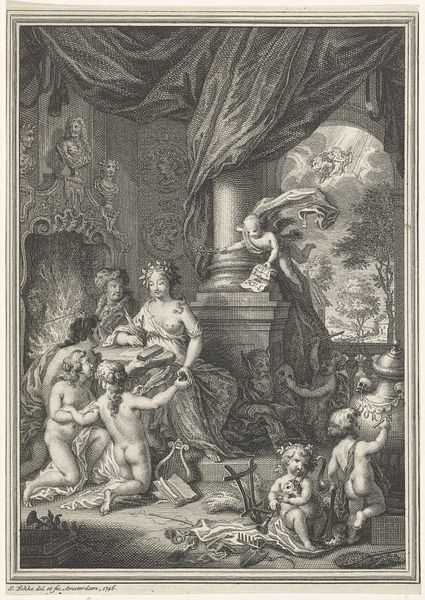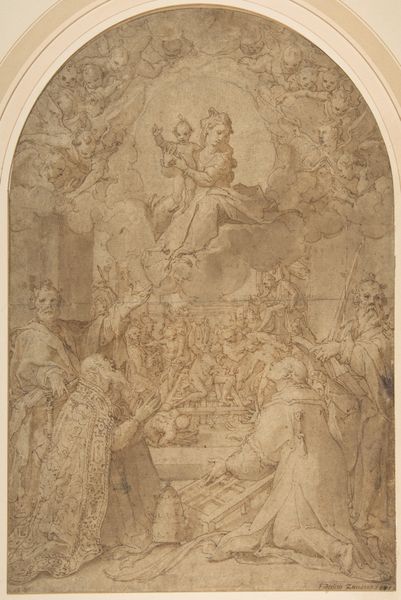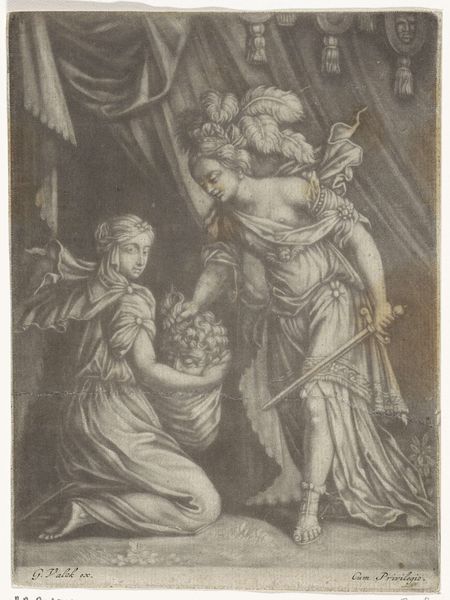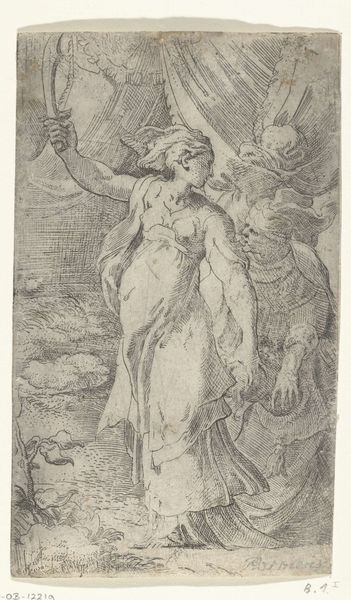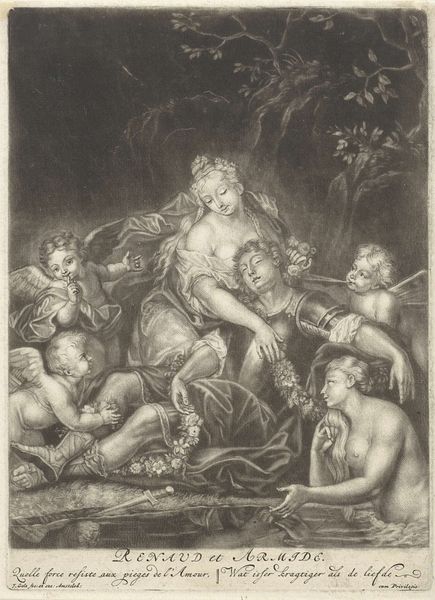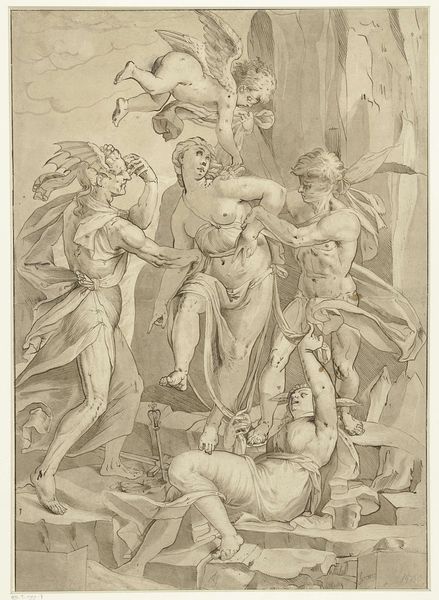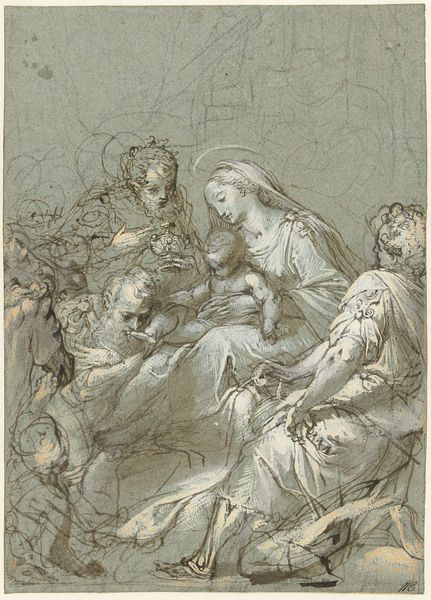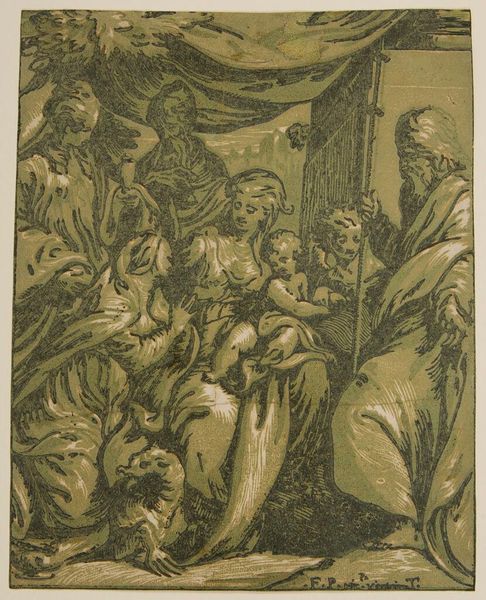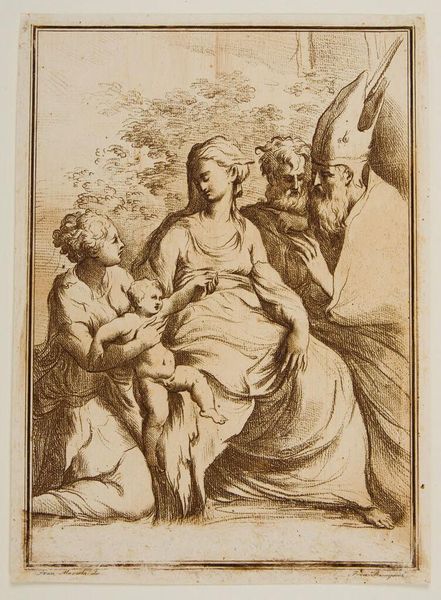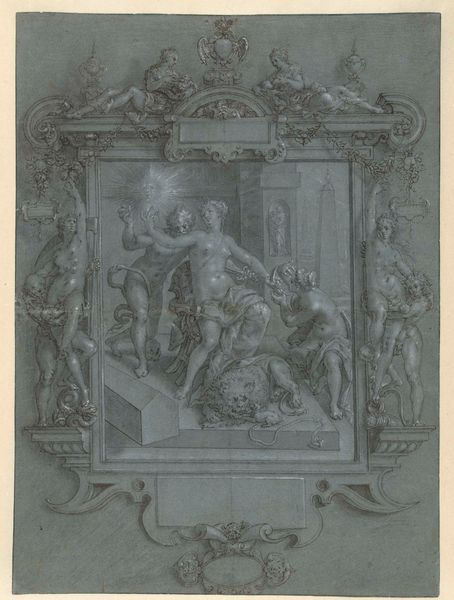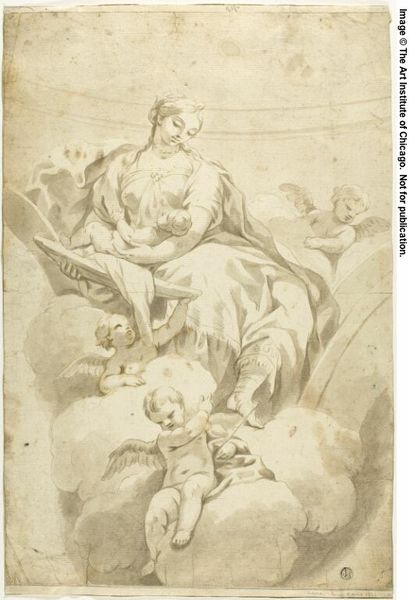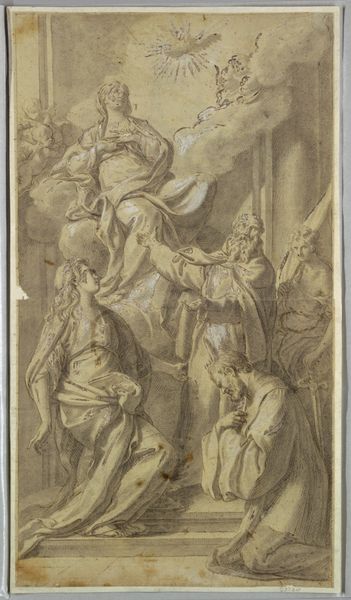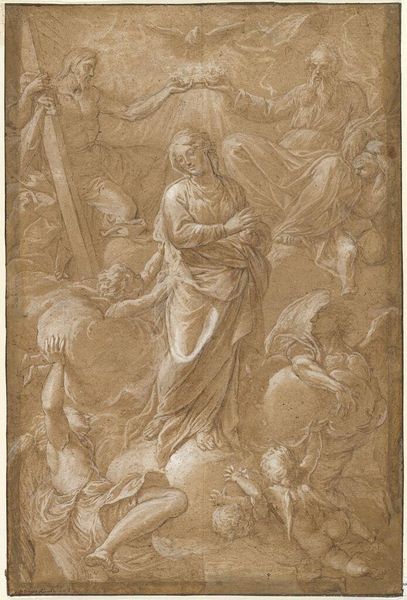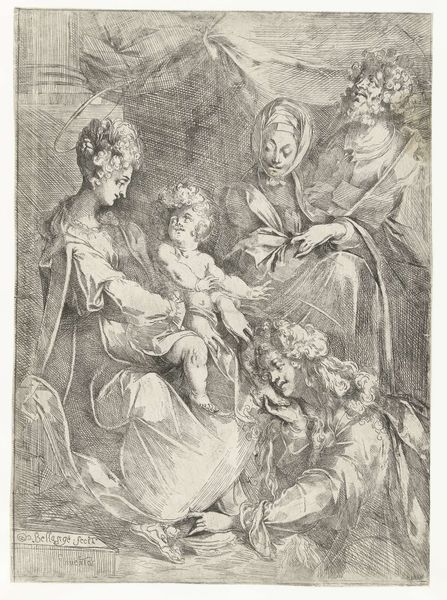
painting, oil-paint
#
portrait
#
allegory
#
baroque
#
painting
#
oil-paint
#
figuration
#
oil painting
#
history-painting
Dimensions: height 288 cm, width 160 cm, thickness 4.4 cm, height 295 cm, width 166 cm, depth 14 cm
Copyright: Rijks Museum: Open Domain
Gerard de Lairesse painted this monumental grisaille panel, "Allegory of Charity", sometime in the 17th or 18th century. The work allegorizes charity through Greco-Roman symbolism. We see classically draped figures and allusions to abundance. This aesthetic speaks to the cultural elite in the Dutch Republic, where Lairesse lived. The Dutch Golden Age was fueled by mercantile capitalism and saw the rise of a powerful merchant class. Paintings like this often adorned the homes of wealthy patrons, reinforcing their status and conveying moral virtue. The work reflects the values that were circulating among the powerful at the time, and art historians can study the way that art helps shape social norms. To understand a work such as this fully, we consult historical texts, political pamphlets, and economic data from the period. This helps us understand the complex interplay between artistic creation and social context.
Comments
No comments
Be the first to comment and join the conversation on the ultimate creative platform.
